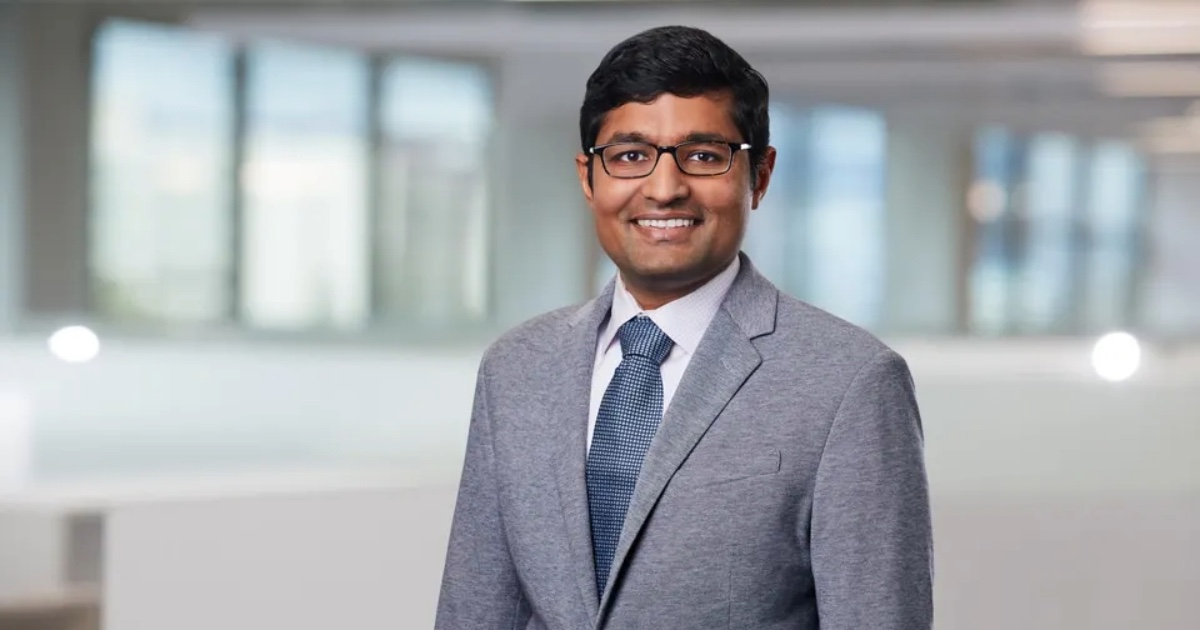- Why Is SoftBank Investing in the US?
- How to invest $50,000 in 2025 for the biggest returns with only modest risk
- Fisher Investments Finalizes Strategic Partnership with Advent and ADIA with Completion of Minority Common Stock Investment
- Poland’s State Fund to Drive Green Bonds and $730M Annual Investment in Energy Transition
- Why is tech giant SoftBank investing over $100 billion in the US?
Qventus, which offers health systems an AI-based care automation platform, has garnered $105 million in Series D funding in a round led by KKR.
You are viewing: Q&A: Qventus announces $105M investment during JPM Healthcare Conference
Bessemer Venture Partners also participated in the round alongside new strategic investors HonorHealth, Northwestern Medicine and Allina Health.
Mudit Garg, CEO of Qventus, sat down with MobiHealthNews during the JPM Healthcare Conference to discuss the company’s funding round and what it plans to do with the investment.
MobiHealthNews: Tell me about Qventus’ Series D funding.
Mudit Garg: A lot of it is, when you don’t need money is when it sort of comes to you, kind of a thing is, but I think what we’ve been building and the space we’ve been building in is there’s a tremendous amount of opportunity there. The new products we built last year and the new capabilities we built around our AI operational systems have been just so resonant.
We’ve always picked use cases where the right thing to do for the patient is also the right thing for the health system, and it’s also financially good, and, therefore, people are attracted to it. Now, we’re being able to take the burden off the frontline staff in a way that we never could before. So, it’s really accelerating the push for adoption much faster there.
See more : Call Your Mother receives investment from Invus
And largely, KKR, in this case, heard feedback from multiple health systems or their LPs [limited partners] and they said this is one of the most positive feedback we’ve ever heard in healthcare investments and in SaaS. That’s what sort of prompted the reach out and the conversations. I’ve felt for a long time like, man, this is the most money on revenue over 12 years. This is a time that our mission and what we set out to do 10 years ago feels the most pertinent. So, that became more and more exciting to say, “Yes, let’s take more capital in and bring a partner on that can help us fully maximize the opportunity in front of us.”
MHN: You were not really looking for funding or did not necessarily need it now. Were you looking for investment?
Garg: We were not explicitly seeking it out. Both our existing investors were excited and were prompting like, “Hey, we can put more capital,” and other external folks had been excited and sort of reaching out and asking, “If we’re interested in it.
This is how I described it to our team, in terms of, like, if a bank gives you money or someone offers you an umbrella when it’s sunny outside. But when it is raining, nobody has an umbrella. When things are going well, everyone is excited. So, I think it was a little bit of that, which is why we weren’t explicitly raising at that point in time.
Some of our customers participated in the round, and they had been asking, “Hey, we want to do more with you. Is there a way we could be even more closely integrated together and could invest capital?” And I told them, “Whenever an opportunity rises I’ll let you know.” And so, as it happened, they all jumped in.
MHN: What are you going to do with the funding?
Garg: If you look at how, as a company, we’ve gone over the course of time, I often describe it as like, if you had a person on your team and you had an early intern, earlier they could tell you, “I looked at the data, something is wrong,” and a better person might say, “Hey, I looked at the data, something is wrong and here is what you could do about it.” Or even better, it would be, “This is the best option. I’m going to do it unless you tell me otherwise.” And then the best of all is, “I did it. There was a problem. There is no longer a problem.”
So, what we’ve done in the evolution of the platform is very much create a more and more capable AI teammate of sorts that can take more and more complex problems and go one rung up the ladder. I’m not saying everything is going to be fully done for you, but instead of just telling you about a problem, we might tell you about a problem and a solution. Instead of just telling you about a problem and a solution, we’ll go one click further and say, “Here’s the best thing to do.” Instead of just doing the best thing to do, we might say, “If you say yes, I will go do it for you.”
See more : New Investment Scam Leverages AI, Social Media Ads to Target Victims Worldwide
That has been really resonant, but it opens up a lot of possibilities both for our existing products and new products that we have. So, we’re launching basically a set of new products on the basis of that into more parts in the patient care journey.
So, today, we’ve done a lot of work, half a million surgeries plus, happening through the platform on the surgical side, and a lot of work on the inpatient stay of the patient. But both further upstream of that and further downstream of that, we are starting to build new products along those paths.
MHN: How does this funding round feel different than previous funding rounds?
Garg: Funding is always a means to an end. So, in some ways, it feels like, okay, yeah, it’s good. But, you know, the work still is the work. I think that is not different. It is a substantial amount. It is a very sizable investor. It is, I think, coming off the backs of one of the key ingredients that there is a very strong group of health systems, which are large health systems that work with us and want to do more.
And it feels that all the ingredients are in place. I’m sure there’s more, there’s a lot more, we are not fully anticipating, but a lot of the ingredients are in place, where there are health systems that want to have the change, they trust in us because we have delivered results before. We have a team that has already scaled and needs to scale more, but it is already scaled, and we have the platform capabilities of not doing just what we’re doing now but a lot more in the future. And in that, it feels different. It also feels different in that it is around when we don’t need it. So, it allows us to not just have it because we need it, but it allows us to invest in things that we’ll need in the future ahead of time versus waiting for it at that time.
The other key piece I would add is that I think we’ve gone through this cycle of excitement before. Right now, there’s, of course, a lot of excitement around the AI pieces that everyone is doing when we did the machine learning work in the first get-go. I think some of the lessons of how we approach the market then are really coming to help us at least shape our approach now, which is the way we build these AI systems, the way we are doing our work. It isn’t just about the AI.
And the same thing in the AI operational systems realm. So, what we are doing is a couple of things. One, we are not trying to build just a little thin layer of the AI layer. So, it’s not just I’m going to scribe something. It’s not just that I’m going to read the chart. It’s a combination of all those pieces alongside the ability to read the right data, alongside the ability to have the right workflows, alongside the ability to understand the full use case.
And therefore, the way we are doing it is systematically, use case by use case, so that any one area that we pick, we deeply understand it and we are able to make sure that there will be a strong outcome coming out of that. While there’s a platform underneath, we’re not just taking the platform mindlessly to the market to say we can do anything you want us to do; what do you want us to do? Because I think that’s the lesson we have learned. So, that is another piece that we hold dear, and that is how we plan to approach it.
Source: https://magnacumlaude.store
Category: News

